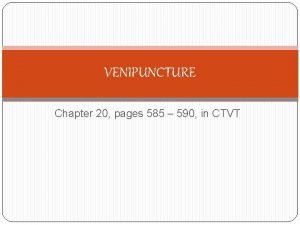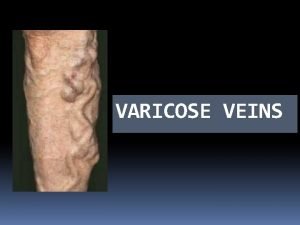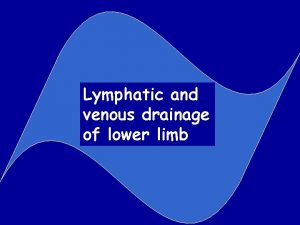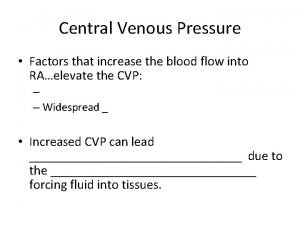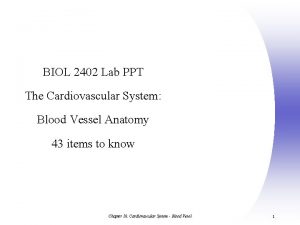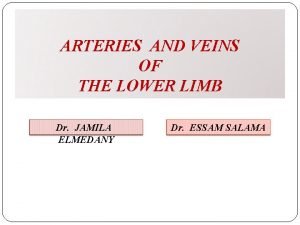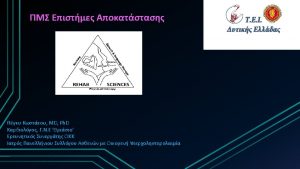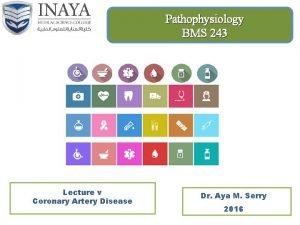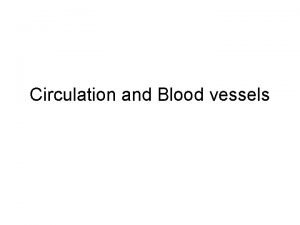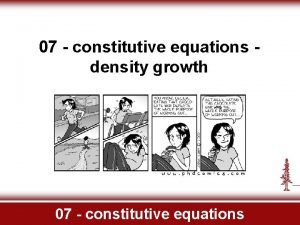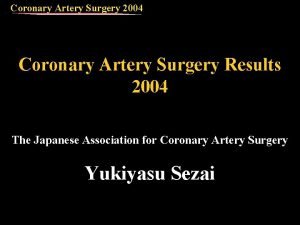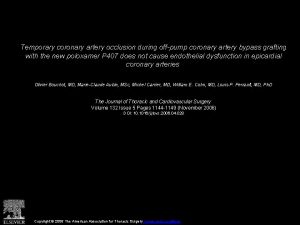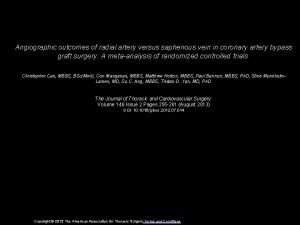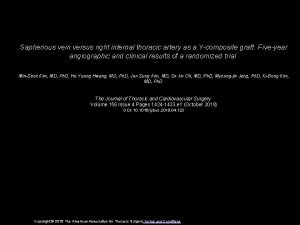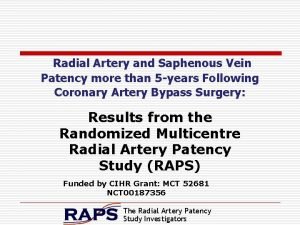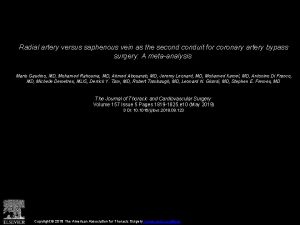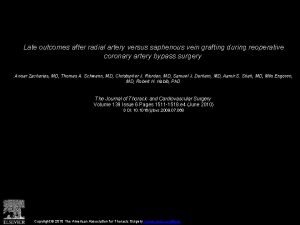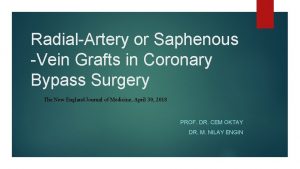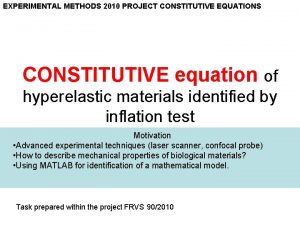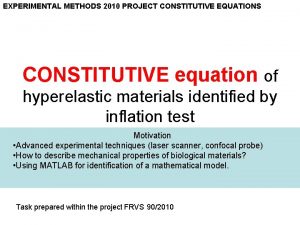Constitutive equations for human saphenous vein coronary artery
















- Slides: 16

Constitutive equations for human saphenous vein coronary artery bypass graft Hynek Chlup, Lukas Horny, Rudolf Zitny, Svatava Konvickova and Tomas Adamek Faculty of Mechanical Engineering Czech Technical University in Prague Czech Republic

Introduction n This report deals with a constitutive modeling of human saphenous vein implanted as coronary artery bypass graft (CABG) n CABG is standard revascularization method Image sources: http: //privatecardiology. com/41. html http: //www. texheartsurgeons. com/CABG. htm

Goals n Identification of suitable constitutive model for CABG n Estimation of material parameters n Comparison of different models

Constitutive behavior n Significant features of blood vessels behavior • Arteries undergo large strains Nonlinear description of deformation • Large strain stiffening Nonlinear material behavior • Significant internal structure Anisotropic behavior • Inelastic behavior Creep, relaxation, viscoelasticity, preconditioning, pseudoelasticity

Constitutive behavior n Anisotropy n Inelastic behavior

Constitutive model n z Anisotropy Composite material – fibers + matrix b t n Nonlinear elastic behavior Stored energy function y - hyperelastic material

Constitutive model n Exponential model n Logarithmic model z c , k 1 , k 2 , b c , m, J m , b material parameters b t

Constitutive model n Material parameters must be determined experimentally n Inflation – extension test

Experiment • Experimental setup • Sample

Measurement n Digital image correlation – DANTEC Q 450 • Stereoscopic sensor – two cameras • Calibration – knowing of dimensions • Correlation – one object in two images – dimensions of object • Correlation with previous and following images – deformation process Temporal record of displacements

Measurement n Pressurization • Manually by a syringe • Pressure record in PC DIC PC unit Pressure probe PC unit

Measured data

Estimation of material parameters n Computational model for inflation – extension test • Thick–walled tube • Fiber reinforced composite • Hyperelastic material • Incompressibility • No shear strains • No residual strains • Model predictions

Results of nonlinear regression Type I models Type II models

Conclusion n Both, exponential and logarithmic model fits experimental data successfully n Exponential model fits data better than logarithmic, especially in low pressures n Neo–Hook member in stored energy functions had not significant contribution to fitting data

Constitutive equations for human saphenous vein coronary artery bypass graft The End
 Great saphenous vein course
Great saphenous vein course Medial saphenous vein cat
Medial saphenous vein cat Lsv vein
Lsv vein Portal circulation
Portal circulation Hunter perforator
Hunter perforator Humongous insurance
Humongous insurance Great and small saphenous vein
Great and small saphenous vein Great and small saphenous vein
Great and small saphenous vein Celiac trunk
Celiac trunk คืออะไร
คืออะไร Branches of femoral artery
Branches of femoral artery Coronary artery disease
Coronary artery disease Annulus of vieussens
Annulus of vieussens Coronary artery disease pathophysiology
Coronary artery disease pathophysiology Where is the pulmonary semilunar valve located
Where is the pulmonary semilunar valve located Color index of blood
Color index of blood Artery vein capillary structure
Artery vein capillary structure

